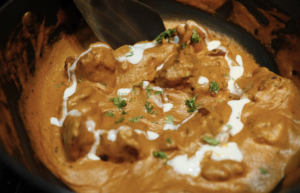
Japanese cuisine is celebrated for its exquisite balance of flavors, and one dish that stands out is the beloved Japanese curry, or “kare raisu.” If you’re following a gluten-free diet, you might think enjoying this dish is off the table. However, fear not! In this comprehensive guide, I’ll walk you through the world of gluten-free Japanese curry, from understanding the ingredients to mastering the art of creating your own delectable gluten-free version.
Understanding Gluten-Free Japanese Curry
Japanese curry is a delightful fusion of Indian and Japanese culinary influences, resulting in a hearty and comforting dish. To make it gluten-free, we’ll focus on sourcing suitable ingredients and crafting a flavorful curry base.
Ingredients for Gluten-Free Japanese Curry
- Gluten-Free Curry Roux: The heart of Japanese curry lies in the roux, which imparts a velvety texture and rich flavor. Look for gluten-free curry roux options, such as S&B Golden Curry Mix (Medium Hot) or Vermont Curry, available at specialty stores or online.
- Protein: Choose gluten-free proteins like organic chicken, grass-fed beef, or tofu. Prioritize quality and choose brands that ensure their products are free from gluten-containing additives.
- Vegetables: Traditional Japanese curry often includes onions, carrots, and potatoes. Opt for fresh, naturally gluten-free vegetables from your local market or grocery store.
- Gluten-Free Broth: Enhance the taste of your curry by using gluten-free vegetable or meat broth. Brands like Pacific Foods and Imagine Foods offer a range of gluten-free broths that contribute depth to your dish.
- Gluten-Free Soy Sauce: Elevate the umami factor with gluten-free tamari or soy sauce. Brands like San-J and Kikkoman provide gluten-free options that add authenticity to your curry.
- Rice: Serve your curry atop steamed white or brown rice. Choose trusted gluten-free rice brands like Lundberg Family Farms or Lotus Foods.
Crafting Your Gluten-Free Japanese Curry: Recipe and Instructions
Step 1: Prepare Protein and Vegetables
- Heat oil in a pot and sear your chosen protein until golden. Set aside.
- Sauté chopped onions, carrots, and potatoes until they start to soften.
Step 2: Create the Gluten-Free Curry Base
- Add the gluten-free curry roux to the pot, stirring until it blends seamlessly with the vegetables.
- Gradually pour in the gluten-free broth, stirring continuously to prevent lumps.
- Allow the mixture to simmer until the sauce thickens, filling your kitchen with tantalizing aromas.
Step 3: Simmer and Combine
- Return the cooked protein to the pot, letting the flavors meld over 15-20 minutes.
- Taste and adjust seasoning, using gluten-free tamari or soy sauce to balance the flavors.
Step 4: Serve and Enjoy Your Gluten-Free Japanese Curry
- Ladle the gluten-free Japanese curry over a bowl of steaming rice.
- Embellish your creation with gluten-free toppings like soft-boiled eggs, pickles, or shredded nori.
Gluten-Free Products and Alternatives
- Gluten-Free Curry Roux: Brands like S&B and Vermont Curry offer gluten-free options suitable for making your own roux.
- Gluten-Free Flour Blends: If you’re creating your own roux, opt for gluten-free flour blends like Bob’s Red Mill 1-to-1 Gluten-Free Baking Flour.
- Gluten-Free Soy Sauce: Choose gluten-free tamari or soy sauce from reputable brands like San-J or Kikkoman.
Q&A: Your Gluten-Free Japanese Curry Questions Answered
Q1: Is traditional Japanese curry gluten-free? A1: Traditional Japanese curry often contains gluten in the form of wheat-based roux. However, with the availability of gluten-free curry roux and ingredient alternatives, you can easily create a gluten-free version.
Q2: Where can I find gluten-free curry roux? A2: Gluten-free curry roux can be found in specialty stores, Asian supermarkets, or online retailers. Brands like S&B Golden Curry Mix (Medium Hot) and Vermont Curry offer gluten-free options.
Q3: Can I use gluten-free flour to make my own roux? A3: Absolutely! You can use gluten-free flour blends to make your own roux from scratch. Brands like Bob’s Red Mill offer reliable gluten-free flour options.
Q4: How do I ensure my protein is gluten-free? A4: Opt for high-quality, naturally gluten-free proteins like organic chicken, grass-fed beef, or tofu. Check product labels to ensure they’re free from gluten-containing additives.
Q5: Can I use other vegetables in my gluten-free Japanese curry? A5: Absolutely! While onions, carrots, and potatoes are traditional choices, feel free to experiment with other gluten-free vegetables like bell peppers, sweet potatoes, and zucchini.
Q6: Can I use brown rice instead of white rice? A6: Yes, you can definitely use brown rice for added nutritional value. Simply adjust the cooking time accordingly as brown rice usually takes a bit longer to cook.
Unlock the flavors of Japanese cuisine with a gluten-free twist by delving into the world of gluten-free Japanese curry. Armed with the right ingredients and a dash of culinary flair, you can savor the essence of this beloved dish while staying true to your dietary preferences. From choosing the perfect proteins and vegetables to creating a luscious curry base, this guide empowers you to master the art of crafting gluten-free Japanese curry that’s as authentic as it is delicious. So, roll up your sleeves, gather your ingredients, and embark on a journey to culinary bliss as you create a gluten-free Japanese curry that tantalizes your taste buds and nourishes your soul.
